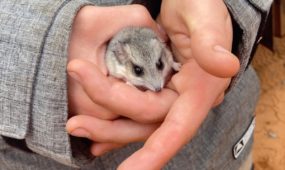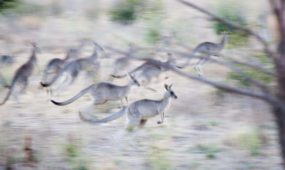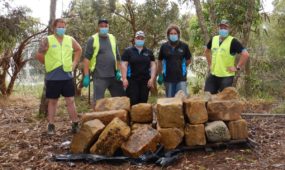Farmers paid to become Outback conservationists
Environment
A CONSERVATION program in the Australian Outback is providing farmers with a new income stream while preserving ancient landscapes.

Sign up to receive notifications about new stories in this category.
Thank you for subscribing to story notifications.
The South Australian government has partnered with pastoralists on two Outback cattle stations.
The Australia-first stewardship program has been formalised following a two-year trial at properties about 500km northwest of the South Australian capital Adelaide.
A total of 194 square kilometres of land on Billa Kalina and Wirraminna stations has been set aside for the project, which involves fencing, decommissioning of artificial watering points such as wells and the removal of stock. While the areas are of significant size, they only represent a small portion of the enormous properties and are unlikely to significantly impact commercial grazing operations.
The areas were chosen because their unique landscapes were poorly represented in Australia’s national park system. The Billa Kalina site (34sq km) features low scrubland on an ancient lakebed while Wirraminna (160sq km) is a mixed wooded landscape with Mulga and Myall trees.
The farmers are paid a lump sum up front for the conservation of each site for the remainder of their pastoral lease, which is 23 years at Billa Kalina and 38 years at Wirraminna. If required, an additional payment is made for required infrastructure, such as fencing.
Project manager Andrew Willson said because the high cost of land had limited the ability of governments to establish new national parks, the program provided a new mechanism for preserving land in Australia’s Arid Zone.
He said expansion of the Natural Resources SA Arid Lands-run program to include more properties would be reliant on additional funding, which is being sought.
“We consider we’ve got proof of concept for this new mechanism and we’ve got a register of interested pastoralists who we could approach again the next round that we do,” Willson said.
“We know there’s interest out there.”
The agreements allow for tourism activities to further diversify income on the sites, as long as it is compatible with the conservation aims.
“A diversified agricultural business is usually a healthy one and we aim to pay fair compensation,” Willson said.
“They get that money up front in a lump sum and to some people that’s attractive because in principle, money received now is worth more than in the future.
“It’s early days but we’ve signed up with really professional pastoralists – these are long-term agreements and we think we’ve got it right.”
The Billa Kalina stewardship area, pictured above, is believed to contain a number of rare birds and mammals including the Chestnut-breasted Whiteface, Thick-billed Grasswren, the Plains Mouse and specialist shrub species Eremophila pentaptera and Goodenia chambersii.
The Wirraminna area is home to regionally rated birds species such as the White-browed Treecreeper, Major Mitchell’s Cockatoo, Gilberts Whistler and plants such as Sandlewood (Santalum spicatum).
Neither land system was previously protected in the formal conservation reserve network in Australia.
Willson said as well as the interest from farmers, the program has generated enquiries from organisations in New South Wales wanting to establish something similar with their pastoral leasehold land.
“There really hasn’t been anything like it in terms of supporting pastoral leaseholders,” he said.
“In the past it’s either been pastoralism or conservation and nothing really in between so this is seen as something new and innovative.”
Billa Kalina pastoralist Colin Greenfield said he had always believed good pastoral management involved looking after the land to benefit stock production and the natural landscape.
“However this program was the first to provide a reasonable financial incentive for us to take an extra step in dedicating this unique land type as an actual area for conservation,” he said.
Jump to next article



